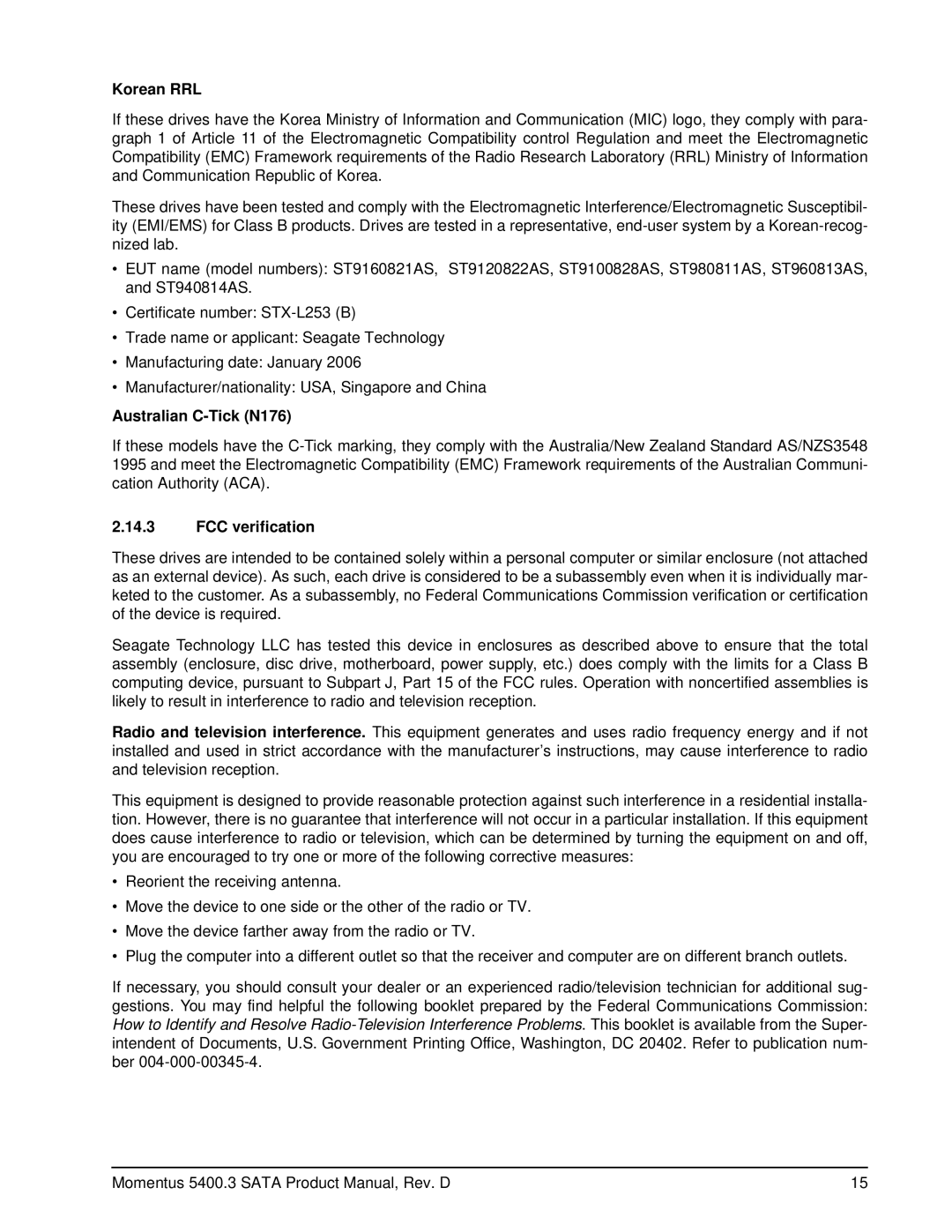ST960813AS, ST9100828AS, ST9160821AS, ST9120822AS, ST980811AS specifications
The Seagate hard drives ST9120822AS, ST960813AS, ST980811AS, ST9100828AS, and ST940814AS represent a solid lineup of storage solutions designed primarily for personal computers and external storage applications. Each of these models showcases a blend of performance, reliability, and innovative technology that caters to a variety of user needs.The ST9120822AS is a 120GB SATA drive known for its advanced data storage capabilities and a 7200 RPM spindle speed, delivering quick access times and enhanced performance for everyday computing tasks. Its Native Command Queuing (NCQ) technology optimizes the order of read and write commands sent to the drive, which significantly boosts performance, especially in multi-tasking environments. The drive is also equipped with an 8MB cache buffer that assists in speeding up data retrieval processes.
Moving up in capacity, the ST960813AS offers 60GB of storage, featuring the same 7200 RPM performance as its smaller sibling. It also benefits from NCQ technology, making it suitable for more demanding applications. This drive excels in scenarios where fast data access is essential, such as gaming and multimedia applications.
The ST980811AS provides 80GB of storage capacity. It shares many core features with its counterparts, including a 7200 RPM spindle speed and an 8MB cache that enhances data throughput. The reliability factor is paramount in these drives, as they come with built-in features designed to minimize data loss, such as error correction codes and advanced formatting technology.
The ST9100828AS boasts an impressive 100GB of capacity, providing ample space for storing large files, applications, and multimedia content. It combines high performance with enhanced reliability, ideal for users who require a dependable storage solution for their important data.
Finally, the ST940814AS offers a 40GB size capability. Despite its smaller storage size, it maintains high performance levels with a 7200 RPM speed and 8MB cache, making it a viable option for those looking for a balance between efficiency and space.
In summary, the Seagate ST9120822AS, ST960813AS, ST980811AS, ST9100828AS, and ST940814AS models encapsulate the essence of dependable storage with their various capacities and robust performance features. These drives reflect a commitment to quality and innovation, ensuring users can rely on them for their data storage and access needs in both personal and professional environments.
